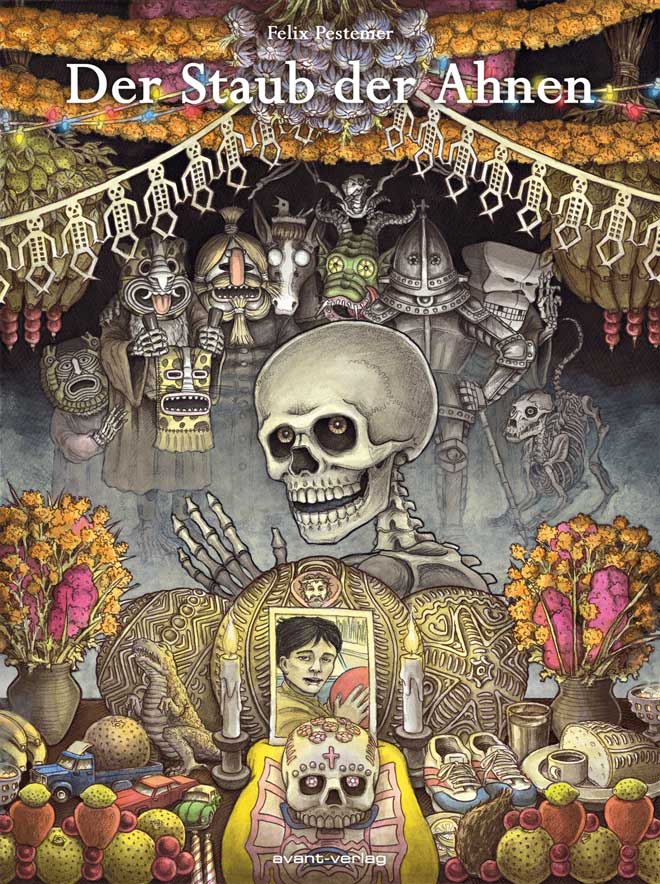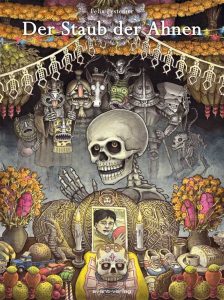
‘The Dust of the Ancestors’: Living with memory – or living in the past?
The graphic novel ‘Der Staub der Ahnen’ (The Dust of the Ancestors) will be published in January 2012 by the Berlin publishing house Avant and at the same time in France by Actes Sud / Editions de l’An2 under the title ‘La Poussière des Aïeux’.

After 20 years absence, museum guard Eusebio returns to his old home town in the Mexican backcountry, his mind set on finally making peace with the Rojas family. None of his old friends from that family are alive anymore. Only for this one day, the Day of the Dead, they come back from the Great Beyond to celebrate with the living. But ghosts of the past are reawakened by news of the tragic death of little Benito Rojas and these ghosts will soon force Eusebio to run away again. He tries to convey comfort to Benito’s mother through a letter: Eusebio is firmly convinced that the dead continue to exist and that they will only crumble into dust if they fade into oblivion.
Created in homage to the Mexican muralists, ‘The Dust of the Ancestors’ is a work in which the (hi)story is told mainly through the illustrations. Almost in passing, the book also offers insight into the rituals and traditions on the “Day of the Dead” and introduces the reader to a culture that does not treat death as a taboo but rather assigns it a proper place in everyday life. This is a culture that celebrates death and makes skeletons dance. (from the covertext)
‘The Dust of the Ancestors’ is based on the illustrated book ‘Polvo’ (limited edition, 2010), which has been expanded and now contains many more detailed illustrations as well as a revised version of the narrative. Apart from the Mexican festivities on the “Day of the Dead” and a visit to the Great Beyond that is cheerful and macabre at the same time, the new book also offers flashbacks to some of Mexico’s bygone eras, as for instance the 1930s of Frida Kahlo and Diego Rivera or the age of the Mexican Revolution. Eventually, an intoxication created by peyote leads readers back to the times of the Aztecs – and from there on directly into Purgatory.
Info links:
– Reading excerpt ‘The Dust of the Ancestors’
